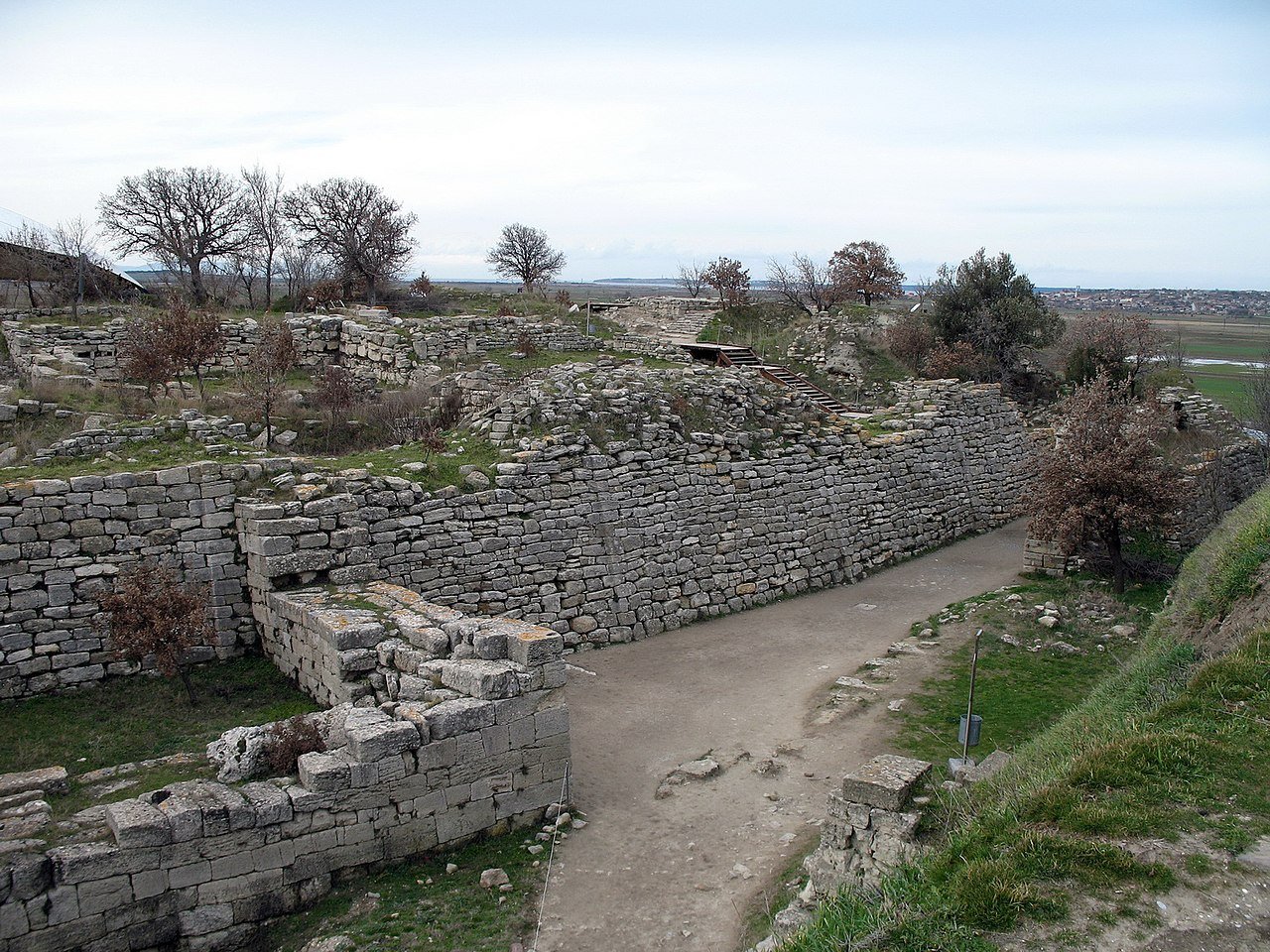
The majority of scholars believe that the Trojan War, if it really happened, was an event that occurred in about 1200 BC (although some scholars place it later). For this reason, most research into the archaeology of Troy has been focused on the Bronze Age. However, Troy continued to exist right through to Homer’s time and beyond. So it is certainly worth asking, what was Troy like in Homer’s time? Was it still important, or was it just a little village?
The Previous View of Troy in Homer’s Time
Troy was inhabited for thousands of years and was destroyed several times during this period. Because of this, there distinct ‘layers’ of the city, with the layers underneath being older than the layers on top. Archaeologists give different names to each of these layers. A layer called Troy VIIB existed from 1180 to 950 BC. Then the city was destroyed by fire.
For many decades, archaeologists believed that after this destruction, Troy was abandoned. They believed that people did not start to inhabit it again until 700 BC. According to this view, Greek settlers arrived at Troy and started building it up again. This next layer of Troy is called Troy VIII. For a while, from 700 BC onwards, it was little more than a small, unimportant village.
Homer lived in the eighth or seventh century BC. This means that in Homer’s time, Troy would have been mostly in ruins, with a little settlement in amongst the remains.
The Latest Research on Troy in Homer’s Time
However, scholars today now know that this view is inaccurate. Troy was not abandoned between 950 and 700 BC. There is evidence that a small community continued to lived there even after the destruction in 950 BC.
From about 900 BC, pottery evidence shows that Greek settlers arrived at Troy. This is much earlier than the previously-believed date of 700 BC. However, there is no evidence for any notable Greek construction works until c. 800 BC. At that time, it appears that the city started to be built up again. And in the mid-eighth century BC, fortification work was done on the city.
Therefore, the Troy of the eighth century BC was clearly not an uninhabited ruin. But was it just a little village?

The Grand City of Troy in Homer’s Time
It is easy to assume that after the destruction of the Bronze Age city of Troy in 1180 BC, the grand Bronze Age structures were no more. For example, there were the famously large walls of Troy, mentioned by Homer in the Iliad. These walls were constructed during Troy VI, in approximately 1600 BC, and they reached an impressive height of about nine meters.
Contrary to popular belief, these grand walls of Troy still existed in Homer’s time. In fact, not only did they still exist, but they were still maintained and in use. There is evidence that the inhabitants of Troy in the eighth century BC performed refortification work on the city walls. Houses were even built inside the walls.
These city walls would have made Troy seem even more impressive in Homer’s time than it did in the Bronze Age. The reason is that most Greeks of this era, the Iron Age, generally did not build the kind of massive walls that were common in the Bronze Age. By Homer’s time, there were numerous Greek cities in western Anatolia that had been founded in the Iron Age.
This means that Troy would have seemed like a far more impressive and intimidating city than almost all its neighbors (unlike in the Bronze Age). So, far from being a little village, the Troy of Homer’s time was an imposing city.
An Important Trading City
Aside from being physically imposing, what about its regional importance? Was Troy still an important city in Homer’s time? The archaeological evidence shows that it was. In Troy VIII, dating to around 700 BC, the people of Troy developed a distinctive pottery style. This pottery is called G2/3 Ware.
Archaeologists have not just found G2/3 Ware at Troy itself. They have also found it at various islands nearby. They have found it at Lemnos, Thasos, Samothrace, Lesbos, and Tenedos. Analysis of this pottery shows that it all originated from Troy.
What does this reveal about the importance of Troy in this era? It shows that it was an important trading city. Troy was not at all a backwater village. It was sending pottery out to various nearby islands in the Aegean Sea. Therefore, the evidence clearly shows that the Troy of Homer’s time was not just physically imposing, but was also a regionally-important trading city.
See all the latest news from Greece and the world at Greekreporter.com. Contact our newsroom to report an update or send your story, photos and videos. Follow GR on Google News and subscribe here to our daily email!



